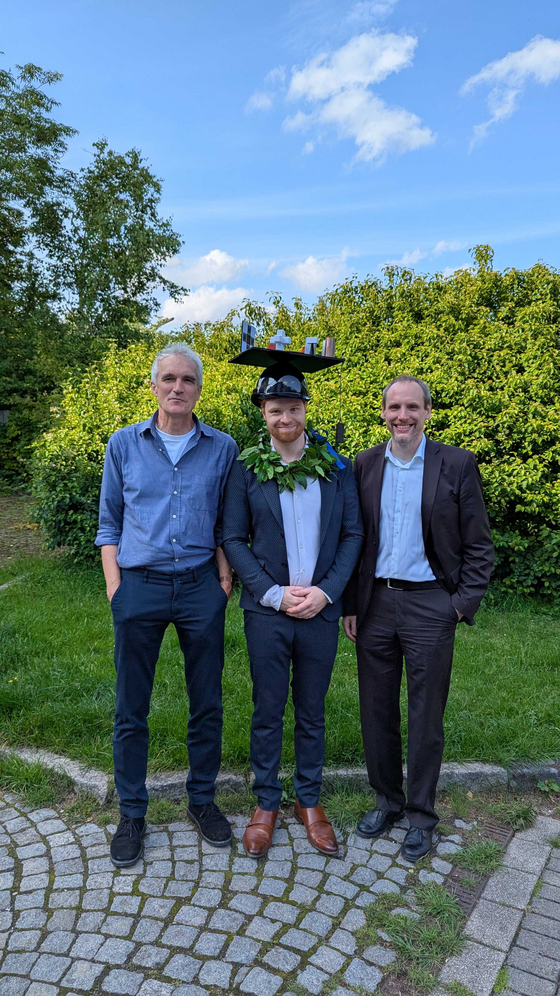Deep learning-based material determination for industrial computed tomography
With a passion for physics and data-driven methods, Moritz Weiß brought together the worlds of industrial computed tomography and deep learning in his dissertation. In cooperation with the company diondo, he developed simulation methods and deep learning models for precise material determination in CT images - a topic that has so far been dominated by clinical research. His work makes a significant contribution to data-based material analysis in industrial contexts and opens up new perspectives for the in-line testing of complex components, for example in battery cell production. Even after completing his doctorate, he remains committed to the field and is actively involved in the transfer of research into industrial applications.
We asked Moritz about his dissertation:
What was the context of your dissertation? What projects or other factors particularly influenced your dissertation?
After completing my master's thesis in experimental solid-state physics, I wanted to continue working on a topic that would expand the world of physics with a new and powerful tool, deep learning.
It quickly became clear that an industrial collaboration with the company diondo would be a perfect fit for me: computed tomography as a physics-based topic, but enhanced by deep learning methods.
The central driving force behind my dissertation was therefore the joy of a physical topic, the material determination of CT images, paired with deep learning, which opened up completely new possibilities for me.
How does your work contribute to the field of research?
Computed tomography is mainly researched for clinical applications, so that industrial computed tomography is almost overshadowed by clinical research.
Many findings certainly apply to both worlds, but there are important differences, especially in the context of material composition, which have not been sufficiently studied for industrial applications.
My work starts with the (data) basis so that deep learning can be applied to material determination and ends with the practical implications for industry-related applications, for example in-line CT inspection of battery cells.

What does the future hold for you and the topic?
I look forward to continuing to enrich diondo in the field of deep learning after my doctorate.
Computed tomography is an exciting and physically motivated field of research that is currently being modernized from many directions with the help of AI.
Furthermore, material determination is also an open field of research beyond clinical application, which is waiting to be further developed by the fresh ideas of the doctoral students.
